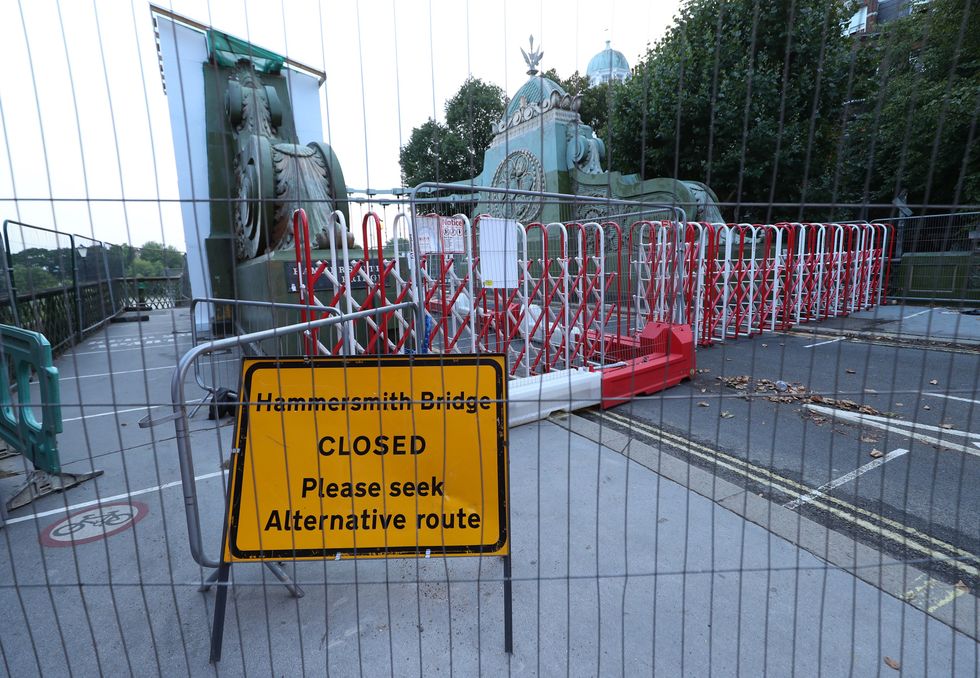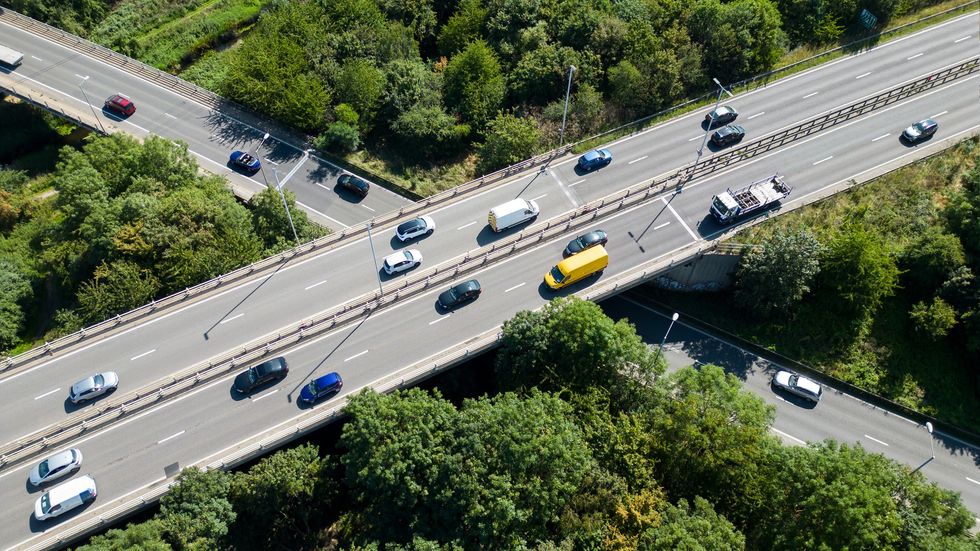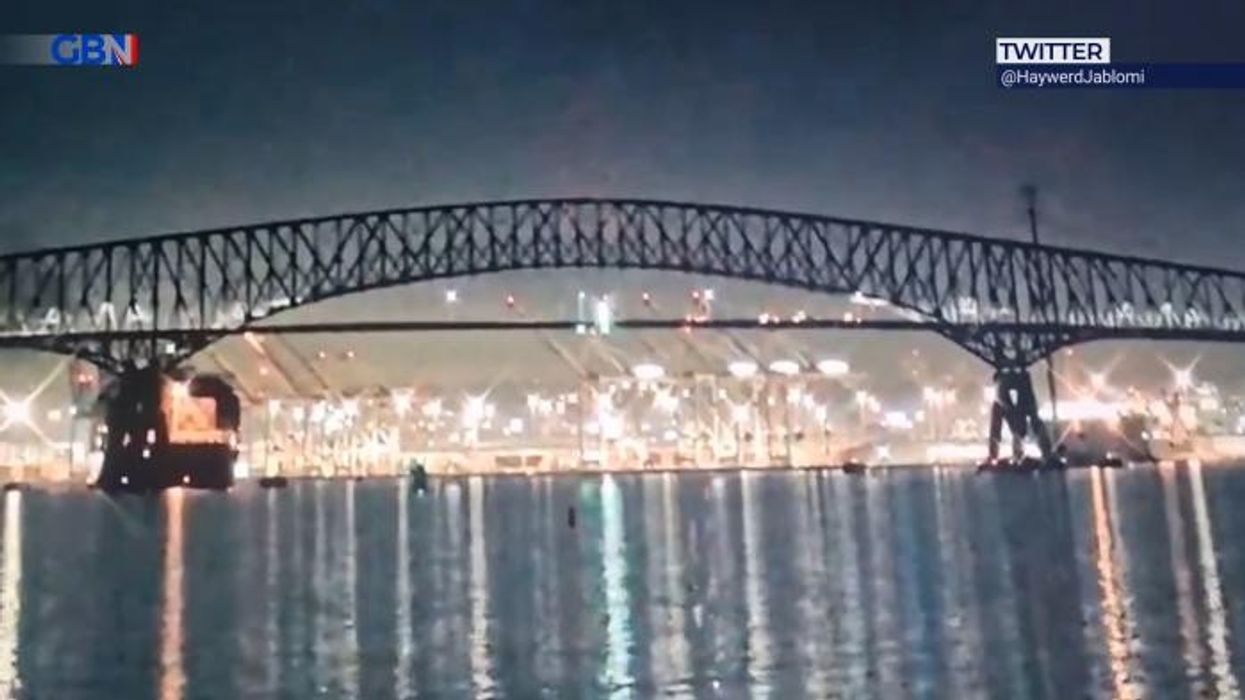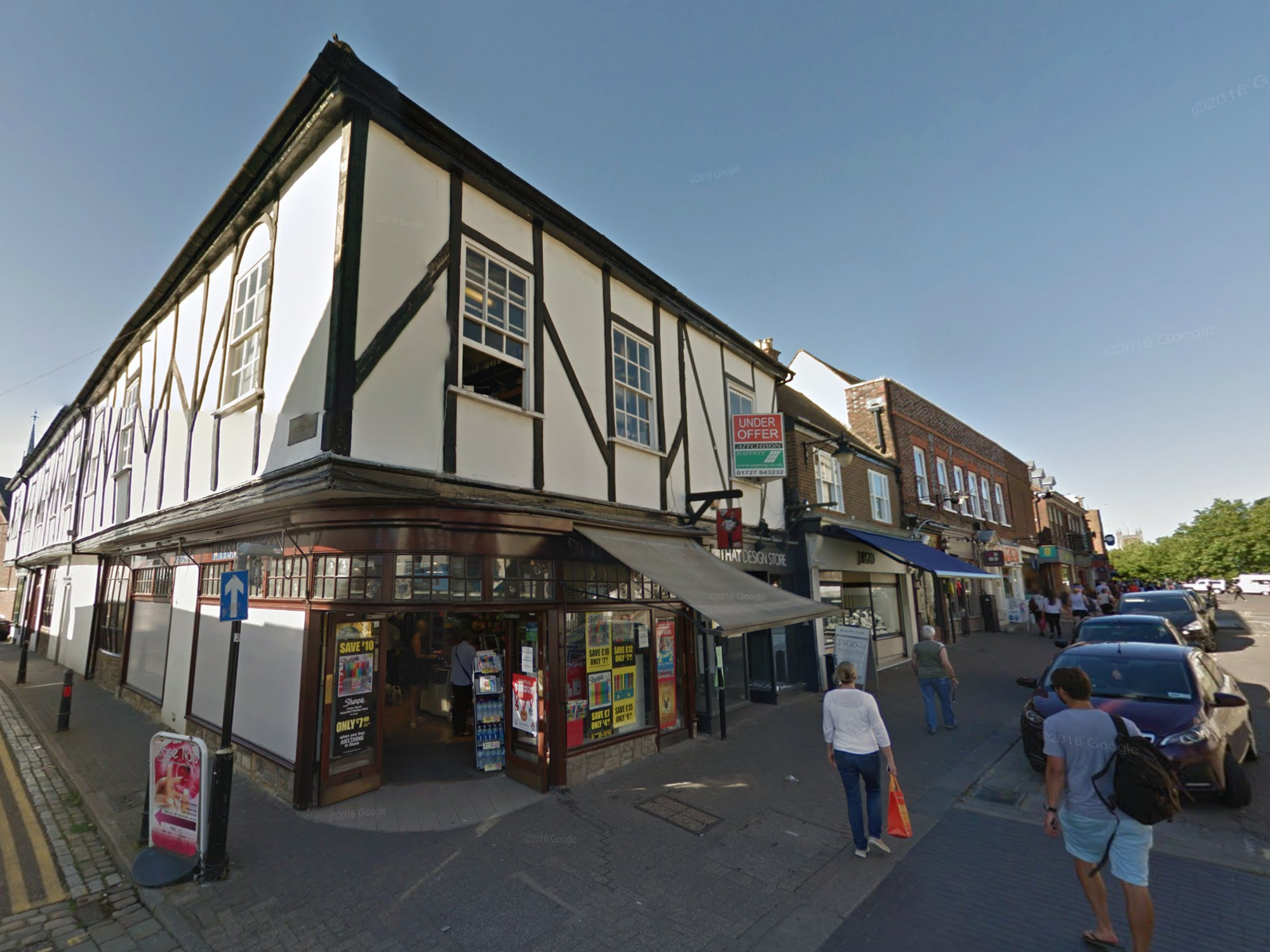Major driver safety concerns sparked as nearly 3,000 bridges around the UK are 'structurally failing'

Almost 3,000 bridges across the UK have been identified as 'substandard'
Don't Miss
Most Read
Latest
Motorists have been warned that one in every 25 bridges located across the UK may be unable to carry the heaviest vehicles sparking major safety concerns from experts.
New research has identified 2,928 of the 73,208 bridges that local authorities are responsible for could be deemed as “substandard” at the end of last year.
The bridges highlighted were flagged as being too weak to be used by 44-tonne lorries - the heaviest vehicles allowed on public roads.
Many of these bridges are already subject to weight restrictions, with councils imposing their own definitions for what is too heavy.
Do you have a story you'd like to share? Get in touch by emailing motoring@gbnews.uk

Hammersmith Bridge was forced to close to motor traffic
|PA WIRE
One London council identifies an “abnormal load” on a vehicle crossing a bridge as anything weighing more than 44,000 kg.
In terms of size, a vehicle should not be wider than 2.9 metres and not have a rigid length of more than 18.65 metres.
Devon was highlighted as the local authority area with the most substandard bridges, totalling 222, followed by Essex with 148, 128 in Somerset and Suffolk with 119.
Some of the bridges were labelled as substandard because they were built to earlier design standards, while others have deteriorated through age and use.
Cracks in the pedestals of Hammersmith Bridge in West London led to motor vehicles being banned from using the 136-year-old cast iron structure since April 2019.
The research, from the RAC Foundation, found that the proportion of bridges that are substandard has fallen from 4.4 per cent a year ago to four per cent.
Between them, local authorities revealed their desire to bring 1,955 of their substandard bridges back up to full carrying capacity.
However, due to budget constraints, councils anticipate that only 292 bridges will have the necessary work carried out on them within the next five years.
Steve Gooding, director at the RAC Foundation, commented on the research, saying: “This data should not be used as a stick to beat highway authorities with.
“While on the one hand it looks like councils are holding their own in keeping their road networks functioning, with every year which passes we are seeing the challenge of maintaining climate resilience increase in the face of more extreme weather.
“It is unrealistic to think that there will be vastly more money added to the road and bridge maintenance pot but there are measures that could help stem the tide of decline, such as a real drive to recruit, train and retain engineers with the right expertise, plus the delivery of a fresh five-year funding settlement for local roads, which would at least allow highway teams to plan ahead.
“Ideally, faced with the long-term challenge of constrained funding and deteriorating weather, we desperately need innovative engineering solutions to provide cheaper, more resilient repairs.”
LATEST DEVELOPMENTS:
- New driving laws could see some vehicles taken off roads with rules aiming to close 'legal loophole'
- Drivers urged to avoid vital motorway routes at certain times over Easter with massive delays expected
- Drivers warned of AI cameras set to be 'deployed nationwide promptly' and slap motorists with huge fines

The proportion of bridges that are substandard has fallen to four per cent
|GETTY
Keith Harwood, who chairs the national bridges group of Adept, an organisation representing local authority bosses responsible for transport and other sectors, added that the nation’s highway infrastructure represents centuries of investment, serving as the backbone of the economy and communities.
However, he explained that as bridges age and face mounting pressures from increased traffic and the impacts of climate change, maintaining their resilience becomes increasingly critical.











